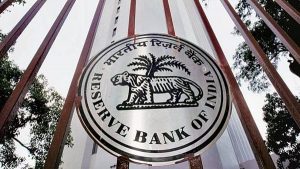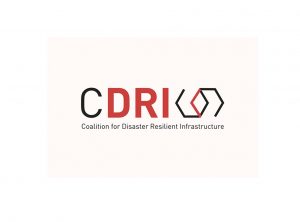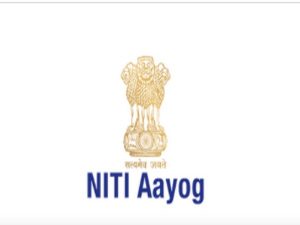Today Current Affairs:2nd July 2022 for UPSC IAS exams, State PSC exams, SSC CGL, State SSC, RRB, Railways, Banking Exam & IBPS, etc
Table of Contents
Eknath Shinde : New Chief Minister Of Maharashtra

Shivsena rebel leader Eknath Shinde was sworn-in as the new Chief Minister of Maharashtra.
- Governor Bhagat Singh Koshyari administered the oath of office to Mr. Shinde. He has become the 20th Chief Minister of the state.
- Besides, Mr Shinde, BJP leader Devendra Fadnavis was sworn-in as Deputy Chief Minister.
- The trust vote of the new government will be held on Saturday.
- The special session of the Assembly will be held on July 2 and 3.
- The Speaker will be elected on the first day of the session.
- Shinde, who revolted against former Chief Minister Uddhav Thackeray on June 20, was joined by 39 Sena MLAs and 11 Independents.
- The rebel MLAs had demanded that Mr. Thackeray quit the tripartite Maha Vikas Aghadi (MVA) and snap ties with the Congress and the Nationalist Congress Party (NCP) to return to the path of Hindutva.
Business Reform Action Plan (BRAP):

Finance Minister Nirmala Sitharaman released the Business Reform Action Plan (BRAP)- 2020 in New Delhi.
- In the report, seven states have been identified as the top achievers based on implementation of the Business Reforms Action Plan.
- The states are Andhra Pradesh, Gujarat, Haryana, Karnataka, Punjab, Telangana and Tamil Nadu.
- The report further mentioned that Himachal Pradesh, Madhya Pradesh, Maharashtra, Odisha, Uttarakhand and Uttar Pradesh figure under the Achievers category.
- While Assam, Chhattisgarh, Goa, Jharkhand, Kerala, Rajasthan and West Bengal have been placed in the Aspirers category. Andaman and Nicobar, Bihar, Chandigarh, Daman and Diu, Dadra and Nagar Haveli, Delhi, Jammu and Kashmir, Manipur, Meghalaya, Nagaland, Puducherry and Tripura have been clubbed under the Emerging Business Ecosystems category.
External Debt:

India’s external debt rose to $620.7 billion at end-March 2022, recording an increase of $47.1 billion over the year earlier period, Reserve Bank of India (RBI) data showed.
- The external debt to GDP ratio declined to 19.9% at end-March 2022, from 21.2% a year earlier.
- Valuation gains on account of the appreciation of the U.S. dollar vis-à-vis the Indian rupee and major currencies including the Japanese yen and euro was estimated at $11.7 billion.
- Excluding the valuation effect, external debt would have increased by $58.8 billion instead of $47.1 billion at end-March 2022 over end-March 2021, the RBI said.
- India’s long-term debt (with original maturity of above one year) rose to $499.1 billion, recording an increase of $26.5 billion over its level at end-March 2021, RBI data showed.
- During the same period, the share of short-term debt in total external debt increased to 19.6% from 17.6%.
- Similarly, the ratio of short-term debt to foreign exchange reserves increased to 20%. U.S. dollar-denominated debt remained the largest component of external debt, with a share of 53.2%.
- Separately, the RBI said net claims of non-residents on India increased by $5.6 billion during the fourth quarter of 2021-22 to $359.8 billion in March 2022.
PSLV-C53/DS-EO Mission:

ISRO undertook PSLV-C53/DS-EO mission on June 30, 2022 from the Second Launch Pad at Satish Dhawan Space Centre, Sriharikota.
- PSLV-C53 is the second dedicated commercial mission of NewSpace India Limited (NSIL).
- It is designed to orbit DS-EO satellite along with two other co-passenger satellites from Singapore.
- This is the 55th mission of PSLV and 15th mission using PSLV-Core Alone variant.
- The mission proposes to demonstrate the utilization of the spent upper stage of the launch vehicle as a stabilized platform for scientific payloads subsequent to the separation of the satellites.
- PSLV-C53 carries three satellites. DS-EO, a 365 kg and NeuSAR, a 155 kg satellite both belonging to Singapore.
- Third satellite is a 2.8 kg Scoob-1 of Nanyang Technological University (NTU), Singapore.
- PSLV Orbital Experimental Module (POEM)DS-EO carries an Electro-Optic, multi-spectral payload that will provide full color images for land classification, and serving Humanitarian Assistance and Disaster Relief needs.
- NeuSAR is Singapore’s first small commercial satellite carrying a SAR payload, which is capable of providing images in day and night and under all weather conditions.
- SCOOB-I satellite is the first satellite in the Student Satellite Series (S3-I), a hands-on student training program from the Satellite Research Centre (SaRC) at Singapore’s NTU School of Electrical and Electronic Engineering.
Snake Island:

Russian forces abandoned the strategic Black Sea outpost of Snake Island, in a major victory for Ukraine that could loosen the grip of Russia’s blockade on Ukrainian ports.
- Snake Island, also known as Serpent Island or Zmiinyi Island, is an island belonging to Ukraine located in the Black Sea, near the Danube Delta, with an important role in delimiting Ukrainian territorial waters.
- On 24 February 2022, two Russian navy warships attacked and captured Snake Island.
- On 30 June 2022, Ukraine said that it had pushed Russian forces from the island.
- The bare rocky outcrop overlooks sea lanes to Odesa, Ukraine’s main Black Sea port, where Russia is blocking food cargos from one of the world’s leading grain suppliers.
Coalition For Disaster Resilient Infrastructure (CDRI):

The Union Cabinet approves categorizing the Coalition for Disaster Resilient Infrastructure (CDRI) as an “International Organization”.
- It also approved the signing of the Headquarters Agreement further granting it the exemptions, immunities, and privileges contemplated by the United Nations (Privileges and Immunities) Act, 1947, which means that member’s property and assets wherever located and by whomsoever held, shall enjoy immunity from every form of legal process except in any particular case it has expressly waived its immunity.
- CDRI is a global partnership of national governments, United Nations agencies and programmes, multilateral development banks and financing mechanisms, the private sector, and academic and research institutions.
- It aims to increase the resilience of infrastructure systems to climate and disaster risks, thereby ensuring sustainable development.
- It was launched in 2019, at the United Nations Climate Action Summit in New York.
- It is the Government of India’s second major global initiative after the International Solar Alliance, and it demonstrates India’s leadership in climate change and disaster resilience issues.
- Since its inception, 31 countries, 6 international organisations and 2 private sector organisations have joined CDRI as members.
- 6 International Organisations: Asian Development Bank (ADB), World Bank Group, United Nations Development Programme (UNDP), United Nations Office for Disaster Risk Reduction (UNDRR), European Union, European Investment Bank.
- 2 Private Sector Organisations: The Private Sector Alliance for Disaster Resilient Societies and Coalition for Climate Resilient Investment.
- CDRI has steadily increased its membership by attracting a diverse range of economically advanced, developing, and vulnerable countries to climate change and disasters.
Shortage Of Leprosy Drugs:

Clofazimine, a key drug for treatment of leprosy, which had been in short supply in the Indian market for several months, is now “not available”, with the situation turning into a crisis over the past three months.
- Clofazimine is one of the three essential drugs in the Multi Drug Treatment of Multibacillary Leprosy (MB-MDT) cases, along with Rifampicin and Dapsone.
- According to the World Health Organization (WHO), leprosy is endemic in several States and Union Territories of India, with the annual case detection rate of 4.56 per 10,000 population.
- The prevalence rate of leprosy is 0.4 per 10,000 population in the country.
- Of the new cases detected during 2020-21, 58.1% were multibacillary, 39% were women, 5.8% were children less than 14 years of age, and 2.41% had visible deformities.
- The rate of visible deformities was 1.1 per million population.
Take Home Ration : NITI Aayog

NITI Aayog and World Food Program today launched a report titled ‘Take Home Ration-Good Practices across the State/Union Territories’.
- The report presents a set of good and innovative practices adopted in the implementation of the Take Home Ration value chain by the States and UTs.
Key Highlights:
- Government of India provides Take Home Ration under the Supplementary Nutrition component of the Integrated Child Development Services (ICDS) to fill the gap in nutrition among children as well as pregnant and lactating women (PLW).
- The document on good practices compiles and collates innovations in Take Home Ration(THR) programmes in various States and Union Territories.
- Aspects related to production, formulation, distribution, labelling, packaging, monitoring, quality assurance, and social and behavioural change have been reviewed to generate a catalogue of good practices.
- This document will help State Governments/Union Territories to adopt good practices in their THR programmes.”
UN World Food Programme(WFP):
- The World Food Programme (WFP) is the food-assistance branch of the United Nations and the world’s largest humanitarian organization addressing hunger and promoting food security.
- Born in 1961, the WFP strives to eradicate hunger and malnutrition, with the ultimate goal in mind of eliminating the need for food aid itself.
- It is a member of the United Nations Development Group and part of its Executive Committee.
Udyami Bharat Programme:

Prime Minister Narendra Modi launches several schemes and programmes at Udyami Bharat Programme in New Delhi.
- During the event, Mr Modi launched the Raising and Accelerating MSME Performance (RAMP) Scheme, Capacity Building of First-Time MSME Exporters Scheme and new features of the Prime Minister’s Employment Generation Programme PMEGP.
- He added that the Centre has increased the budget by more than 650 percent in the last eight years to strengthen the Micro, Small and Medium Enterprises (MSME) sector.
- A self-reliant fund of 50 thousand crore rupees has been released for the sector.
- The Prime Minister also asked MSMEs to register on the GeM portal for supplying goods to the government.
- Modi said the government has decided that for orders up to 200 crore rupees, no global tender will be undertaken and this is in some ways a reservation for the MSMEs.
- Under the Emergency Credit Line Guarantee Scheme, the central government has ensured 3.5 lakh crore rupees for the MSMEs.




